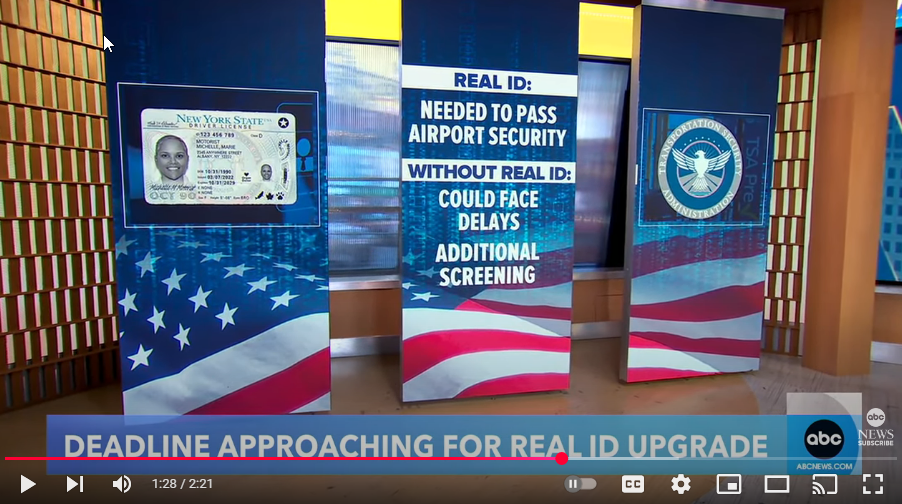The long-anticipated deadline for Real ID enforcement is now just weeks away, sparking a nationwide surge in Department of Motor Vehicles (DMV) appointments as travelers scramble to upgrade their licenses before the new rules take effect. Under the federal mandate, beginning May 7, travelers aged 18 and older must present a Real ID-compliant driver’s license or identification card to board domestic flights or enter secure federal facilities. Those without a Real ID will need to use alternative forms of identification such as a valid passport or certified birth certificate.
Real ID, originally passed by Congress in 2005 in the wake of the 9/11 attacks, sets heightened security standards for state-issued IDs to help prevent identity fraud and enhance national security. The implementation date has been delayed multiple times, most recently due to COVID-19, but the Department of Homeland Security confirms that enforcement will begin this spring without further postponement.
NBC’s Maggie Vespa reports that many Americans are just now realizing the urgency of the requirement, prompting a rush to obtain compliant IDs at DMVs across the country. In some states, wait times have more than doubled as residents try to beat the cutoff. Officials are urging individuals to check for the gold or black star icon on their license, which indicates Real ID compliance.
In parallel with Real ID enforcement, international travel authorities are exploring additional modernization efforts that could revolutionize airport check-ins and border security. According to The Times of London, global officials are evaluating a plan modeled after a U.S. Transportation Security Administration (TSA) pilot program that would allow travelers to upload their passport information to a secure digital platform and verify their identity through facial recognition technology.
The system, which could eventually replace paper boarding passes and manual ID checks, is currently being tested in select U.S. airports. If adopted internationally, passengers would simply use their smartphone and a face scan to check in, pass through security, and board flights. Proponents say the upgrade could reduce long lines, improve efficiency, and enhance security accuracy. Privacy advocates, however, caution that the widespread use of biometric data requires robust safeguards to protect personal information and civil liberties.
The potential expansion of digital identity tools comes at a time when global travel is rebounding rapidly, pushing airports and governments to find faster and more secure ways to manage the flow of passengers. The convergence of Real ID implementation and next-gen identification technology suggests that travelers in the near future may encounter significant changes in how they navigate airports, both domestically and abroad.
Despite lingering confusion about the Real ID rollout, federal officials are urging travelers to act now to avoid disruptions during the busy summer travel season. U.S. airports are expected to experience record traffic levels this year, and the Transportation Security Administration warns that non-compliant travelers could face delays or be denied boarding altogether.
For now, Real ID remains a critical piece of identification policy, but the travel experience is evolving rapidly—with digital innovation, facial recognition, and mobile verification potentially shaping the next frontier of how people fly.



